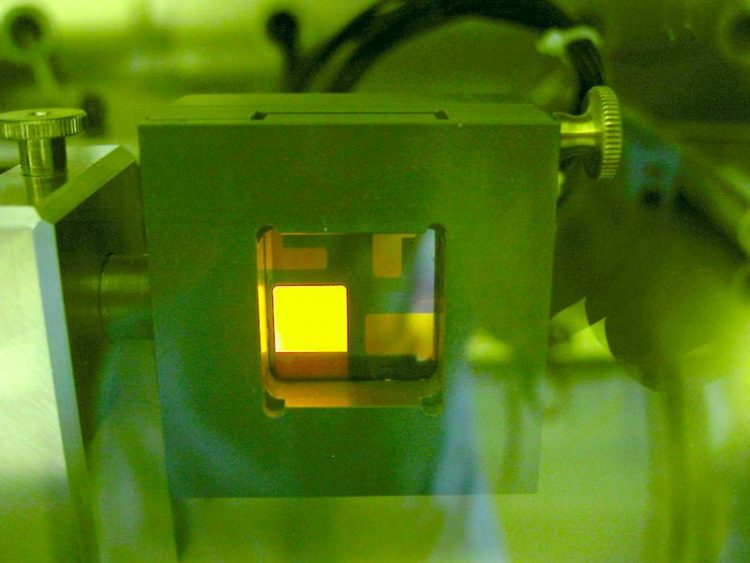Improved stability of plastic light-emitting diodes

Orange-emitting polymer light-emitting diode © MPIP
Monitor screens and smartphones that can be rolled and folded up are applications that could become possible in the future thanks to the development of polymer (plastic) based semiconductors.
Electronics from these conducting plastics pave the way for affordable, flexible and printable electronic components. A major obstacle hindering the market introduction of plastic based light-emitting diodes (PLEDs) is their relatively limited stability.
After a few months of continuous operation their light-output starts to decrease. In spite of many investigations in both industry and academic laboratories the cause of this degradation effect is only poorly understood.
Researchers at the Max Planck Institute for Polymer Research have recently discovered the mechanism causing the PLED degradation.
During degradation defects are formed that strongly reduce the current injected from the positive electrode. Furthermore, these defects lead to unwanted losses in the light generation processes.
The research results are published in the latest edition of the scientific journal Nature Materials.
By using a mixture of two polymers (plastics) the effect of the defects can be strongly suppressed, leasing to improved stability of the PLEDs.
Professor Paul Blom, Director at the Max Planck Institute for Polymer Research and head of its department for Molecular Electronics, and his research team are confident that the improved stability will boost the applicability of plastic light-emitting diodes.
Media Contact
All latest news from the category: Power and Electrical Engineering
This topic covers issues related to energy generation, conversion, transportation and consumption and how the industry is addressing the challenge of energy efficiency in general.
innovations-report provides in-depth and informative reports and articles on subjects ranging from wind energy, fuel cell technology, solar energy, geothermal energy, petroleum, gas, nuclear engineering, alternative energy and energy efficiency to fusion, hydrogen and superconductor technologies.
Newest articles

“Nanostitches” enable lighter and tougher composite materials
In research that may lead to next-generation airplanes and spacecraft, MIT engineers used carbon nanotubes to prevent cracking in multilayered composites. To save on fuel and reduce aircraft emissions, engineers…

Trash to treasure
Researchers turn metal waste into catalyst for hydrogen. Scientists have found a way to transform metal waste into a highly efficient catalyst to make hydrogen from water, a discovery that…

Real-time detection of infectious disease viruses
… by searching for molecular fingerprinting. A research team consisting of Professor Kyoung-Duck Park and Taeyoung Moon and Huitae Joo, PhD candidates, from the Department of Physics at Pohang University…





















